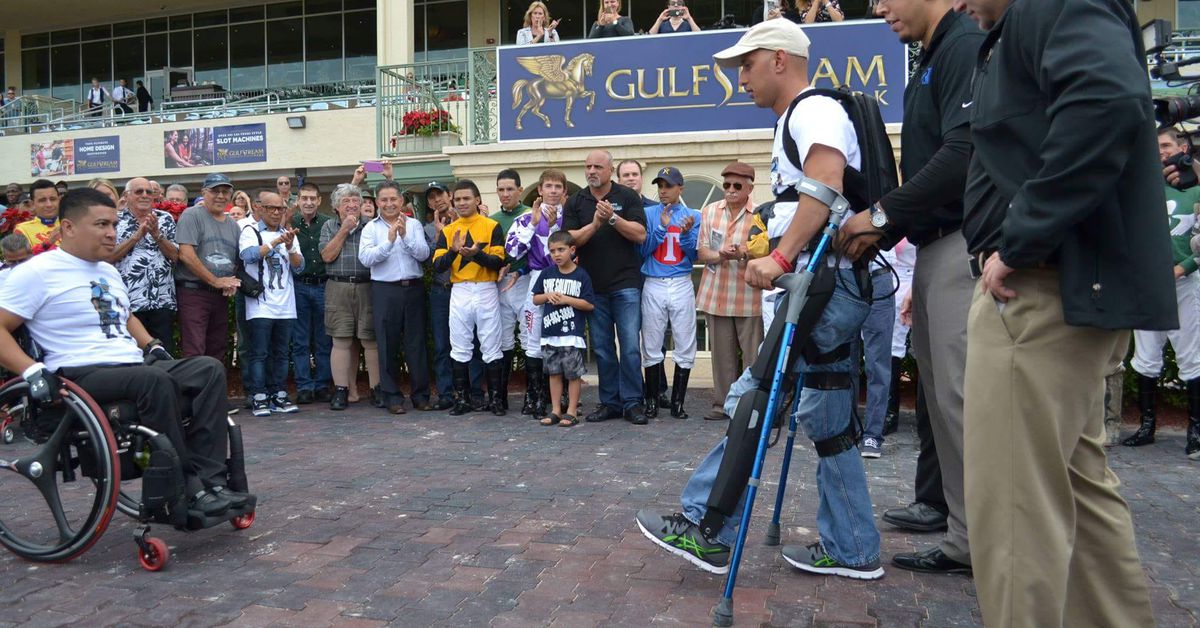Alternative link where I’m told the story is written better, but unfortunately has a signup wall and I’m not willing to sign up https://www.404media.co/paralyzed-jockey-loses-ability-to-walk-after-manufacturer-refuses-to-fix-battery-for-his-100-000-exoskeleton/
This is an examine of why Right to Repair and standardized batteries are important.
I was just thinking the other day why we don’t have standardized EV batteries with a swap process for instant refueling. It would open up so many use cases, particularly for those who can’t have something like that charge overnight.
they exist for electric scooters in some regions, but car manufacturers really hate each other. it’s possible but unlikely. it takes them forever to even offer a charging port adapter.
I would love more standardized batteries in everyday tech too. We need to standardized another shape or two for phones and other small tech. Finding good brands’ bike lights with AA or AAA batteries, for example, impossible anymore.
I’m shocked to learn that they are licensing the tech to competitors instead of holding everything in the walled garden
We used to in the r&d stages of rudimentary automotive models https://en.m.wikipedia.org/wiki/History_of_the_electric_vehicle
Nio is one company that does just that in China, i’d assume swapping battery is expensive though so the use case is still limited.
Just FYI, you can get around to sign up walls by disabling Javascript, which you can do with Ublock Origin.
Can you just copy and paste it here as a comment? The entire thing?
Michael Straight, a former jockey paralyzed from the waist down, was left unable to walk for two months after the company behind his $100,000 exoskeleton refused to fix a battery issue, as reported earlier by the Paulick Report and 404 Media. “I called [the company] thinking it was no big deal, yet I was told they stopped working on any machine that was 5 years or older,” Straight wrote on Facebook, referring to a wiring problem in the watch he wears to operate the machine.
“I find it very hard to believe after paying nearly $100,000 for the machine and training that a $20 battery for the watch is the reason I can’t walk anymore?” he wrote. Straight has been using the ReWalk exoskeleton since 2014, following a horseback riding accident years prior.
His situation isn’t the only one like this. In 2020, the medical firm behind a retinal implant that helps blind people see went bankrupt and abandoned the technology, leaving its users without support if something goes wrong. This Nature report also explains what happened to patients after the collapse of companies behind implantable devices used to treat conditions like cluster headaches and chronic pain or when their prototype devices languish if the companies can’t find a fit in the market.
Lifeward, the company that makes the ReWalk Personal Exoskeleton, fixed the issue days after Straight’s story appeared in the Paulick Report and on a local Florida news station. “What took me two months and got me no results, only took you guys four days,” Straight said in a video on Facebook over the weekend.
In a statement to The Verge, Lifeward spokesperson Kathleen O’Donnell said the company is “pleased to report that we got in touch with Mr. Straight last week, and we were able to resolve the issue with his device over the weekend.” She also said Lifeward is “committed to working to expand access to exoskeletons through reimbursement coverage,” but that may not help people who either can’t or simply don’t want to replace the devices they have.
In parallel, as Mr. Straight’s device is now more than 10 years old, we are also encouraging him to replace it, now that Medicare coverage and other options are becoming available for reimbursement of personal exoskeletons for medically eligible individuals. Lifeward has committed to working to expand access to exoskeletons through reimbursement coverage, and after 5 years of effort, a new category was created by Medicare, which began paying for personal exoskeletons in April of this year. The company has built an internal team to work with the user and their clinician every step of the way during the process of screening for eligibility and filing claims to Medicare. This is a major milestone for the paralyzed community and for the industry to supply and provide replacements of these products.
i dont know that an exoskeleton is boring or dystopian.
it’s not about the exoskeleton, but that the fact that the guy was forced unable to use it and left paralyzed for two months because the manufacturer refused to give him a $20 replacement battery for the remote, making the $100k exoskeleton a brick. If it wasn’t for the media outrage, he would still be paralyzed in a bed waiting for someone to carry him around with a wheelchair





